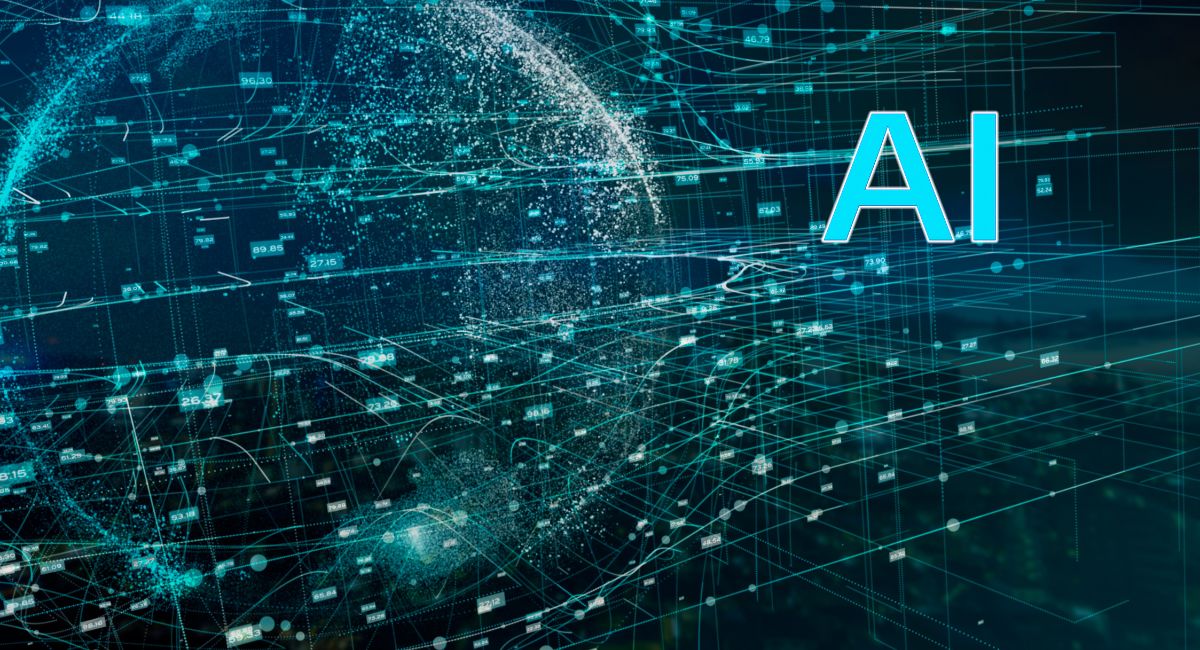Top 10 Real-World Applications Of Generative AI
The world of artificial intelligence (AI) has witnessed remarkable advancements, and among them stands Generative AI, a cutting-edge technology that has opened up new vistas of opportunities for developers and e-commerce businesses alike. In this comprehensive guide, we will delve into the captivating world of generative AI, exploring its core concepts, use cases, real-world applications, and its profound impact on content creation across diverse industries.
Definition of Generative AI
Generative AI represents an innovative variant of artificial intelligence that possesses the remarkable ability to create a wide array of content types, including audio, text, and images. One of its distinctive features lies in its capability to generate synthetic data, which has rapidly fueled the popularity of generative AI tools such as ChatGPT, GitHub Copilot, and DALL-E. These user-friendly interfaces have democratized access to generative AI and unleashed its potential to revolutionize content creation.
Why Generative AI Matters
Generative AI has emerged as a powerful force for transforming multiple industries, and its potential to tackle existing challenges is undeniable. For instance, it holds promise in generating rich academic content, making education more accessible and engaging. On the flip side, the rise of generative AI in creating synthetic data raises ethical concerns related to cybersecurity and data privacy. However, with the advent of transformers and large language models, generative AI is marching forward, enabling more accurate and sophisticated operations.
Also, read – Top 10 Ways Generative AI Is Increasing NFT Adoption
Use Cases of Generative AI
Generative AI finds itself at the epicenter of various applications, unleashing its creative potential across different domains. In the realm of text generation, AI researchers have begun training generative adversarial networks (GANs) to produce text that resembles human speech. Notable examples, like ChatGPT, showcase the remarkable feats of generative AI in generating natural language text.
The allure of generative AI is equally evident in image generation, where AI models can create novel images based on natural language prompts. Text-to-image generation protocols, as demonstrated by DALL-E 2, are becoming increasingly sophisticated and hold immense promise for creative industries.
Video generation has also found its stride with generative AI, as exemplified by tools like Stable Diffusion. These tools can breathe life into existing videos, seamlessly creating music videos and generating transitions between text prompts. The potential for innovation in gaming is similarly enhanced, where AI can create storylines, characters, and design elements, enabling gaming studios to develop captivating content without overwhelming the development team.
In the world of language translation, generative AI equipped with natural-language understanding (NLU) models facilitates real-time language translations, breaking down language barriers and expanding the reach of products and services to global audiences. Additionally, generative AI excels in code development, offering aspiring developers valuable insights and best practices for generating code snippets. GitHub Copilot is a prime example of how generative AI can provide code suggestions and accelerate the coding process.
Furthermore, the prowess of generative AI extends to data generation, where it augments existing datasets and creates new samples for improving machine learning models. Its ability to generate synthetic data without relying on real user data ensures enhanced privacy and security, paving the way for novel applications in areas like self-driving cars.
Working of Generative AI
The inner workings of generative AI revolve around neural networks, the backbone of artificial intelligence. These networks are adept at identifying patterns within extensive datasets and generating novel and original content. The training process involves adjusting the weights and parameters of connections between neurons, reducing the discrepancy between desired and predicted outputs. This iterative learning allows the network to learn from mistakes, improving accuracy with each iteration.
Some of the key models underpinning generative AI include:
1. Large Language Models (LLMs): LLMs process and generate natural language text, benefiting from access to vast amounts of data gathered from sources like social media posts and books. These models excel in various language processing tasks, such as machine translation and language modeling, contributing to the development of renowned language models like GPT-4.
2. Generative Adversarial Networks (GANs): GANs are among the most influential models in generative AI, featuring two distinct neural networks—the generator and the discriminator. The generator creates new data, while the discriminator is trained to differentiate between real data from the training set and data produced by the generator. The adversarial process drives the generator to produce data that closely resembles real data, leading to remarkable generative capabilities.
3. Transformer-based Models: Transformers excel in capturing context and relationships among sequential data, making them highly efficient in natural language processing tasks like question answering, machine translation, and language modeling. GPT-3 is a prime example of a transformer-based generative AI model, demonstrating impressive language understanding and generation capabilities.
4. Variational Autoencoder Models (VAEs): Similar to GANs, VAEs comprise two distinct neural networks—the encoder and the decoder. VAEs process large datasets and compress the data into a smaller representation, enabling the creation of new data that closely resembles the original dataset. VAEs find applications in generating images, audio, and video content.
Generative AI could add $4.4 trillion annually to global economy – by comparison, the UK’s entire GDP is $3.2 trillion.
75% of the value that generative AI use cases could deliver falls across four areas: customer operations, marketing and sales, software engineering, and R&D.… pic.twitter.com/BV6L1OwEyj
— Vala Afshar (@ValaAfshar) July 24, 2023
Real-World Applications of Generative AI
Generative AI has proven to be a game-changer in various industries, unleashing its creative potential and transforming the way we interact with technology. As the technology continues to advance, its applications in the real world are expanding rapidly. Here, we delve into the top 10 real-world applications of Generative AI, showcasing its versatility and impact across different domains.
**1. Content Generation and Creative Industries:**
Generative AI has opened up a world of possibilities for content creators in the creative industries. From generating text for articles, write an essay for me ai and blog posts to creating captivating visuals and illustrations, AI-driven content creation tools have become invaluable assets for writers, designers, and artists. Companies like OpenAI’s ChatGPT and DALL-E exemplify how Generative AI can assist in producing compelling content, enabling creators to explore new ideas and narratives.
**2. Gaming and Virtual Worlds:**
The gaming industry has embraced Generative AI to create vast virtual worlds, rich narratives, and dynamic characters. AI-powered game design tools can generate unique landscapes, quests, and storylines, making games more immersive and engaging for players. This application allows game developers to create content at scale, enhancing user experiences without the need for manual content creation.
**3. Design and Creativity Support:**
Generative AI is proving to be a valuable tool for designers, architects, and engineers. AI-driven design tools can generate design options, layouts, and blueprints, streamlining the creative process and providing novel ideas for designers to explore. This application accelerates the design iteration process, leading to more innovative and efficient solutions.
**4. Image and Art Generation:**
Generative AI has unlocked the potential for AI-generated art and visuals. From creating digital artwork to generating realistic photographs, AI-powered tools like NVIDIA’s GANs and StyleGAN have demonstrated their ability to produce visually stunning and lifelike images. Artists and designers can collaborate with AI to explore new artistic frontiers and create mesmerizing artworks.
**5. Voice and Speech Synthesis:**
Generative AI has revolutionized voice and speech synthesis technologies, enabling the creation of lifelike, human-sounding voices. AI-powered speech synthesis models, like Google’s WaveNet and DeepMind’s Tacotron, can convert text into natural-sounding speech, with applications ranging from virtual assistants to audiobook narration.
**6. Video and Animation Generation:**
In the realm of video production and animation, Generative AI has proven to be a powerful ally. AI-driven tools can generate animated sequences, special effects, and even entire scenes, reducing the time and effort required for traditional animation processes. The animation industry is witnessing a paradigm shift, with AI-driven animation tools enhancing creativity and efficiency.
**7. Personalized Marketing and Advertising:**
Generative AI is empowering marketers to create personalized and targeted content for their audiences. AI-driven marketing platforms can generate tailored product recommendations, personalized advertisements, and dynamic content that adapts to individual user preferences. This level of personalization enhances customer engagement and drives higher conversion rates.
**8. Drug Discovery and Healthcare:**
Generative AI is making significant contributions to drug discovery and healthcare research. AI models can analyze vast datasets of molecular structures and identify potential drug candidates with specific properties. This application expedites the drug development process, leading to faster and more cost-effective discoveries.
**9. Language Translation and Natural Language Processing:**
Generative AI is transforming language translation and natural language processing tasks. AI-driven language translation tools can convert text from one language to another with remarkable accuracy. Similarly, AI language models like GPT-3 are revolutionizing natural language processing, enabling chatbots, virtual assistants, and sentiment analysis with unprecedented proficiency.
**10. Data Augmentation and Enhancement:**
Generative AI is instrumental in data augmentation, where AI models can generate additional synthetic data to enhance the diversity and size of training datasets for machine learning models. This is especially useful in scenarios where collecting real-world data is expensive, limited, or privacy-sensitive. Generative AI can bridge the gap and provide the necessary data for robust machine learning models.
The real-world applications of Generative AI are vast and diverse, revolutionizing industries and pushing the boundaries of creativity and innovation. From content generation to gaming, from design support to healthcare research, Generative AI continues to unlock new possibilities, empowering individuals and organizations to achieve more with artificial intelligence. As the technology advances further, we can expect even more exciting and transformative applications of Generative AI in the years to come.
Conclusion
Generative AI represents a technological marvel with boundless potential. Its ability to generate diverse content types, automate coding tasks, and transform industries like gaming and web design is reshaping the future of artificial intelligence. As the technology matures, addressing issues related to accuracy and ethical considerations becomes crucial to unlocking its full potential. By understanding the fundamental principles and exploring the various use cases, we can harness the transformative power of generative AI and continue pushing the boundaries of innovation in the AI landscape.
Stay informed with daily updates from Blockchain Magazine on Google News. Click here to follow us and mark as favorite: [Blockchain Magazine on Google News].
Get Blockchain Insights In Inbox
Stay ahead of the curve with expert analysis and market updates.
latest from tech
Disclaimer: Any post shared by a third-party agency are sponsored and Blockchain Magazine has no views on any such posts. The views and opinions expressed in this post are those of the clients and do not necessarily reflect the official policy or position of Blockchain Magazine. The information provided in this post is for informational purposes only and should not be considered as financial, investment, or professional advice. Blockchain Magazine does not endorse or promote any specific products, services, or companies mentioned in this posts. Readers are encouraged to conduct their own research and consult with a qualified professional before making any financial decisions. The featured image used is just a creative depiction of the title and it does not intend to hurt sentiments of any person or institution. If it hurts anyone sentiments, please do not hesitate to reach out to Blockchain Magazine.

 Bitcoin
Bitcoin  Ethereum
Ethereum  XRP
XRP  Tether
Tether  Solana
Solana  USDC
USDC  Dogecoin
Dogecoin  Cardano
Cardano  Lido Staked Ether
Lido Staked Ether  TRON
TRON  Chainlink
Chainlink  Wrapped Bitcoin
Wrapped Bitcoin  Sui
Sui  Wrapped stETH
Wrapped stETH  Avalanche
Avalanche  Stellar
Stellar  Hedera
Hedera  Toncoin
Toncoin  Shiba Inu
Shiba Inu  LEO Token
LEO Token  Hyperliquid
Hyperliquid  Bitget Token
Bitget Token  Litecoin
Litecoin  WETH
WETH  USDS
USDS  Polkadot
Polkadot  Bitcoin Cash
Bitcoin Cash  Ethena USDe
Ethena USDe  MANTRA
MANTRA  Wrapped eETH
Wrapped eETH  Uniswap
Uniswap  Ondo
Ondo  Pepe
Pepe  Monero
Monero  Aave
Aave  WhiteBIT Coin
WhiteBIT Coin  NEAR Protocol
NEAR Protocol  Mantle
Mantle  Official Trump
Official Trump  Aptos
Aptos  Dai
Dai  Internet Computer
Internet Computer  Ethereum Classic
Ethereum Classic  Bittensor
Bittensor  Cronos
Cronos  OKB
OKB  POL (ex-MATIC)
POL (ex-MATIC)  Gate
Gate 




